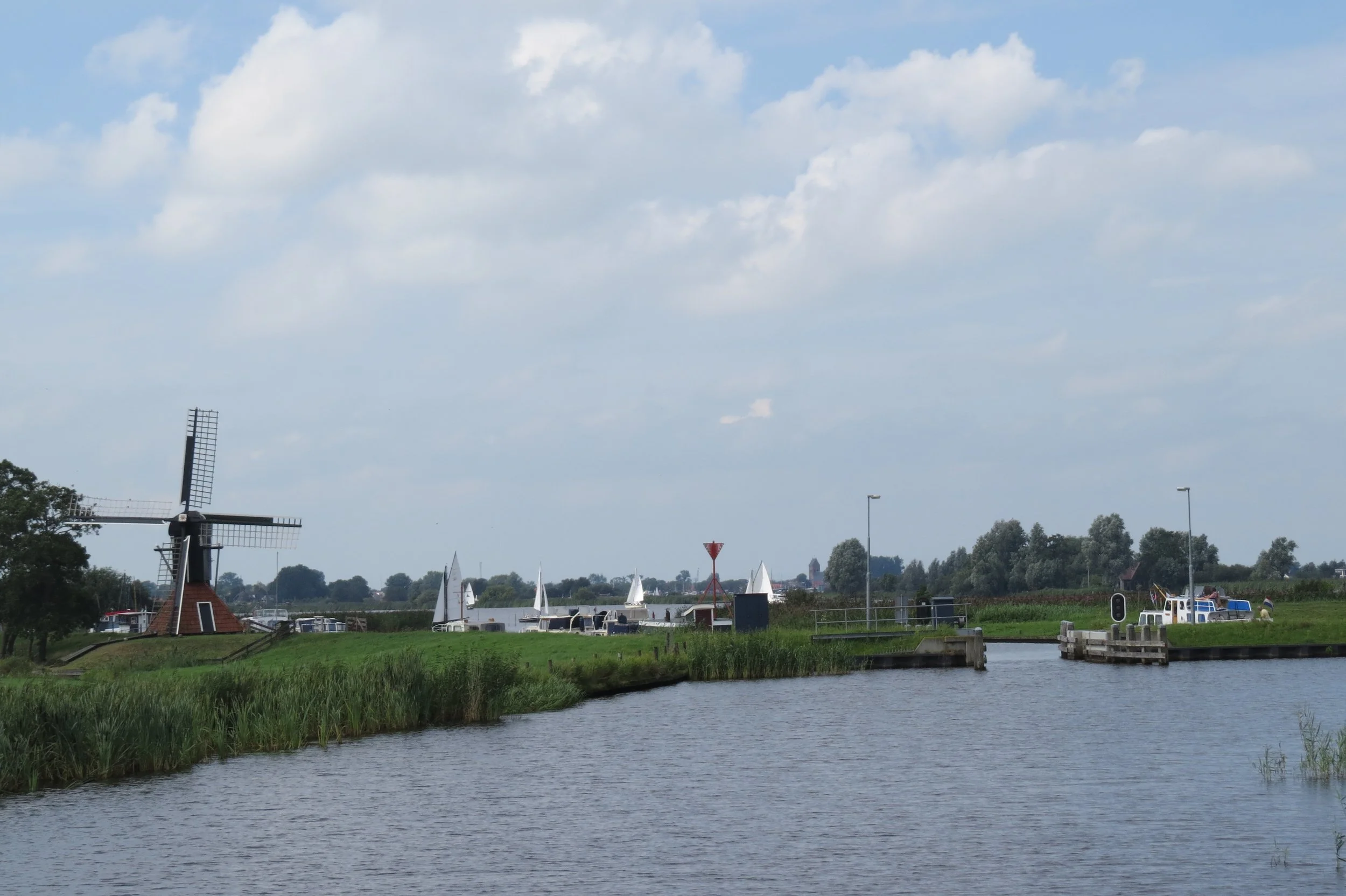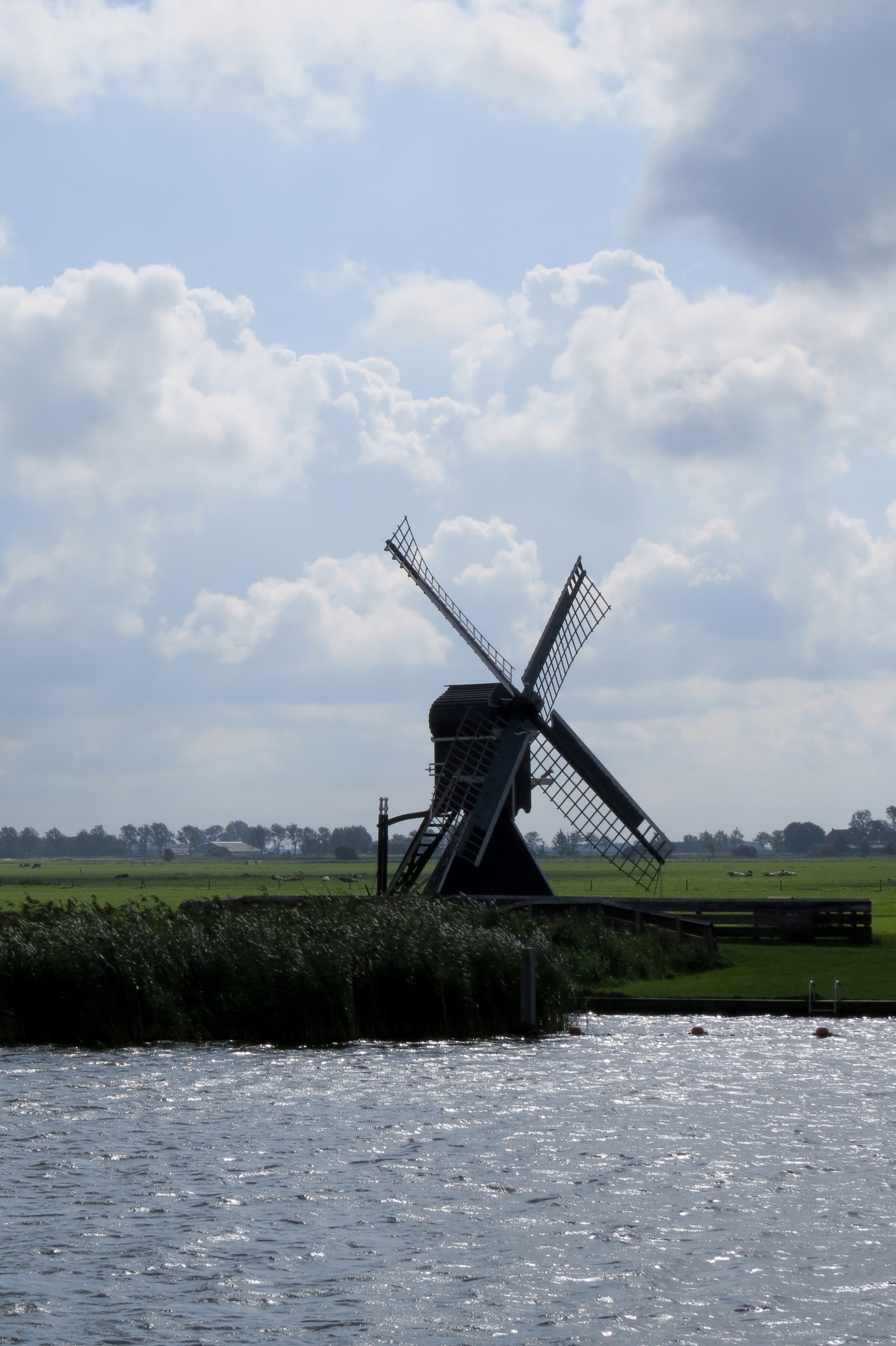The Netherlands is a little over 41 thousand square kilometres (or 16 thousands miles), roughly the size of Vancouver Island.
A few hundred years ago the country was even smaller. It lies at the western edge of Europe, where large rivers flow into the North Sea. Much of the country is very low land and often flooded. In fact, most of the country is below sea level. At its lowest point, The Netherlands - which means ‘Low Lands’ - is an amazing 7 meters (20’) below sea level.
Look at how different the windmill’s shapes are. And this one has canvas cloth on its arms to catch more wind.
Sometimes people refer to the country as Holland, but that name is not correct. Two of its 12 provinces are called North and South Holland, so calling the entire country Holland is like calling all of the United States ‘New England’.
The country can be windy and wind is one of the cleanest, most available sources of renewable energy.
Some 700 years ago people engineered windmills which were able to drain the land. They built dikes around a low lying area, then used the windmills to pump water to the other side of the dike, into a river. Not only did they use windmills to pump water away from flooded lands, they also started to create, claim, new land from what was once sea bottom.
In 1986 the country added a whole new province to its size by reclaiming land from the sea. There used to be a large bay, the Zuiderzee. People built a huge dike to dam it off from the sea, then pumped water out until the land fell dry. The new province, called Flevoland, added 1,400 square kilometres to the little country!
Inside the mill has curved walls.
Many windmills are still standing throughout the country, some are hundreds of years old. There are many different types of windmills. Some are used for pumping water while others use the power of wind to grind grain into flour. At first glance they may all seem the same, but when you pay attention you will notice that their shapes and roofs are often very different since they all serve different purposes.
Windmills are also often used as a home for the miller and family. Can you imagine living in a round or octagonal house that shakes and creaks in the wind? The miller can span canvas sails onto the mill’s arms to catch the wind even better. He can also turn the top of the mill into a different direction to make optimum use of the wind.
One spot in The Netherlands is especially famous for its beautifully preserved windmills: Kinderdijk. On a sunny day at this Unesco World Heritage site, you can see 19 windmills in a row, sometimes all turning in the breeze at once - an awesome sight. Not only do they still pump water away from low-lying polder land, they also attract thousands of visitors who come to see the spectacular sight.
Kinderdijk
Nowadays, wind mills in The Netherlands have taken on a whole new look. The landscape is now dotted with a new kind of ‘wind mill’: tall turbines. These turbines are much more efficient than old-fashioned windmills but also more controversial. They are often considered an eye soar, can be dangerous to birds and cause noise pollution. The turbines have three large blades that spin in the wind. Its axel transfers power to the generator and stores energy. Large turbines can create and store some 8 million kWh per year, enough to supply power to over 2,000 homes. There are more than 2,000 wind turbines across The Netherlands and more have been build off shore as wind farms in the North Sea.
In addition to traditional wind mills and modern wind turbines, Rotterdam is home to the world’s largest wind turbine. At 850’ tall (260 meters, the Statue of Liberty is just over 300’ tall!), it can produce 12 megawatts of power, enough to keep the lights on in more than 15,000 homes. This turbine, called Haliade-X, has three blades each of which is more than 350 feet long, longer than a football field. These blades are so huge that they couldn’t be transported from GE’s factory in North America. So the company built a factory in France just to construct them. Haliade X has recently started operating. With a capacity of 12 megawatts, it provides more energy than the current most powerful turbine: 67 gigawatts hours gross per year is sufficient for 16,000 European households.
And so the blades of windmills keep turning wind into renewable, clean and efficient energy as they have for hundreds of years…









